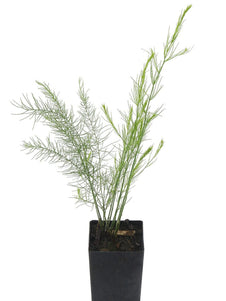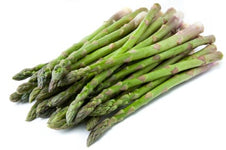





Asparagus Mary Wash
Asparagus Mary Wash
- In stock, ready to ship
- Inventory on the way

Usually available: All year
Life cycle: Perennial
Height: 1.5m
Position: Full sun
Soil preference: Well drained
This is how we pack and send your Herb Plants to all states except TAS & WA
You will receive
- 1 Asparagus Mary Wash Herb Plant in a 50 X 75mm tube - General growing instructions
All of our Herb Plants are grown organically with certified organic potting mixes and fertilizers
Botanical Name: Asparagus officinalis
Mary Washington is a female variety of Asparagus. It produces thick dark green spears with sweet and succulent purple tips. They have a delicate, delicious flavor when cooked.
Mary Washington shows good resistance to rust and crown rot.
Asparagus is an excellent source of vitamin A, and contains significant amounts of vitamin C, riboflavin, phosphorus and calcium. One cup of cooked fresh asparagus contains only 30 calories.
The young shoots and rhizomes are a useful diuretic for cystitis and swollen ankles. It is also useful for flushing waste products accumulated in the joints causing rheumatic pain and gout.
Asparagus can be lightly steamed or stir fried served as a vegetable or cooked and pureed for soup.
Growing
Because asparagus remain in place for years, advance soil preparation helps future production greatly. Compost, manure and green manure crops should be worked into the bed well ahead of planting. Well looked after plants will produce for 15 to 20 years.
Plant 30cm apart, well drained soil and full sun are preferred. Feed with seaweed and minerals in early spring before spears appear.
Cut back the clumps in mid autumn as they begin to shoot seeding ferns and mulch heavily to achieve maximum succulent spears in the spring.
Weeds and grasses are the worse problems with asparagus. They compete with the developing spears, and can significantly decrease yield and quality.
Harvesting
Ideally the spears are left for the first two years after which time the crowns will have fully developed. Harvest lightly in the third year, in early spring.
After three year harvest every spring, spears can be picked if they are thicker than a pencil and before they branch. Harvest spears 12 to 20 cm in length by cutting or snapping
All information provided on this website is for informational purposes only. Please seek professional advice before commencing any treatment.





